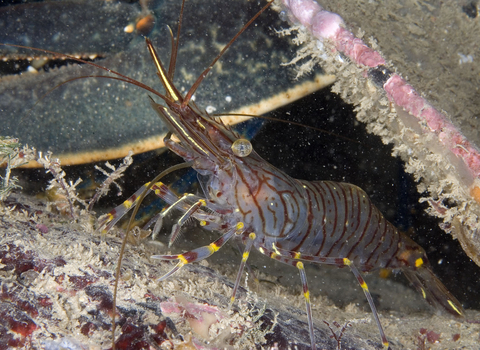
Common prawn ©Paul Naylor www.marinephoto.co.uk
Common prawn
The common prawn is a familiar sight to anyone who has spent time exploring rockpools - particularly their characteristic quick dart into the darkness just as you spot them!
Scientific name
Palaemon serratusWhen to see
January to DecemberSpecies information
About
Common prawns are found in rockpools and shallow waters down to around 40m deep, normally hiding in crevices or under stones. Common prawns are scavengers and will eat anything they find, from decaying seaweed to dead mussels. There is a very similar, closely related species also found in rockpools called the rockpool shrimp.How to identify
A large shrimp with a translucent body with brownish-red tiger stripes along the length. It has large eyes separated by a serrated rostrum. Its walking legs are banded with reddish-brown and bright yellow and it has very long brown antennae. It is virtually identical to the rockpool shrimp (Palaemon elegans); they can be told apart by the number of teeth on the rostrum.Distribution
Found on rocky shores all around UK coasts.Did you know?
Female common prawns carry their fertilised eggs around on their legs, carrying up to 4000!The Wildlife Trusts are working with sea users, scientists, politicians and local people towards a vision of 'Living Seas', where marine wildlife thrives.




